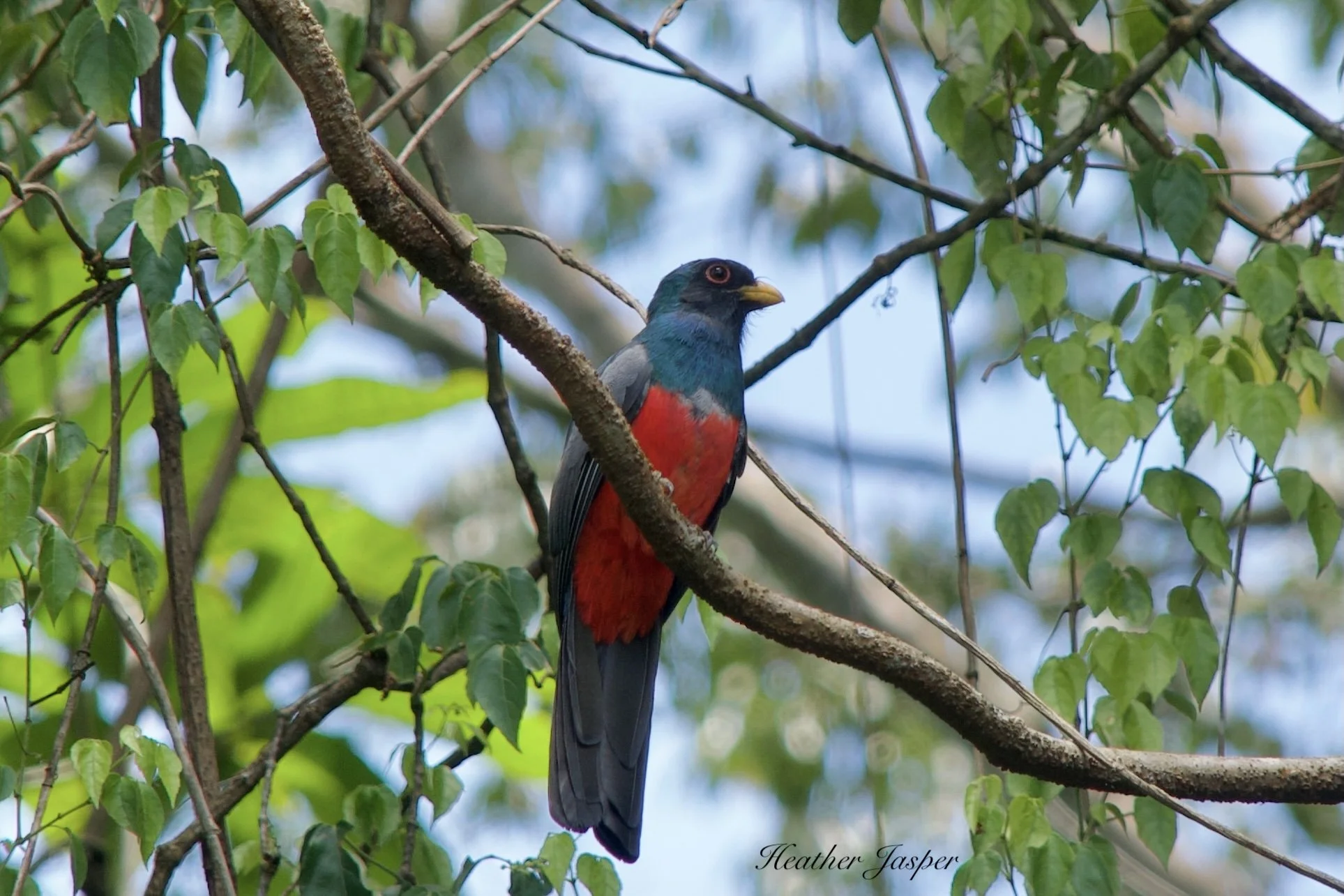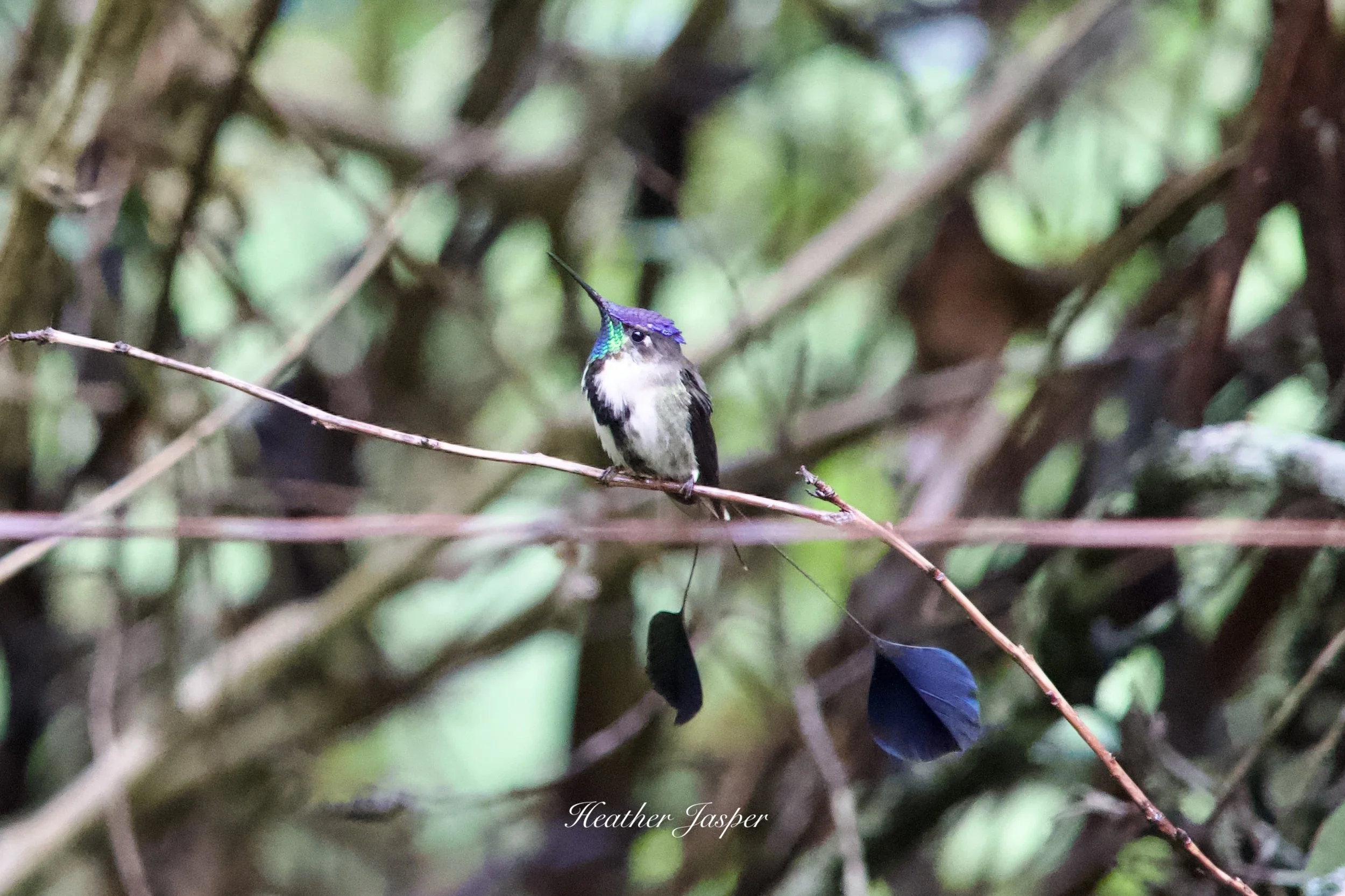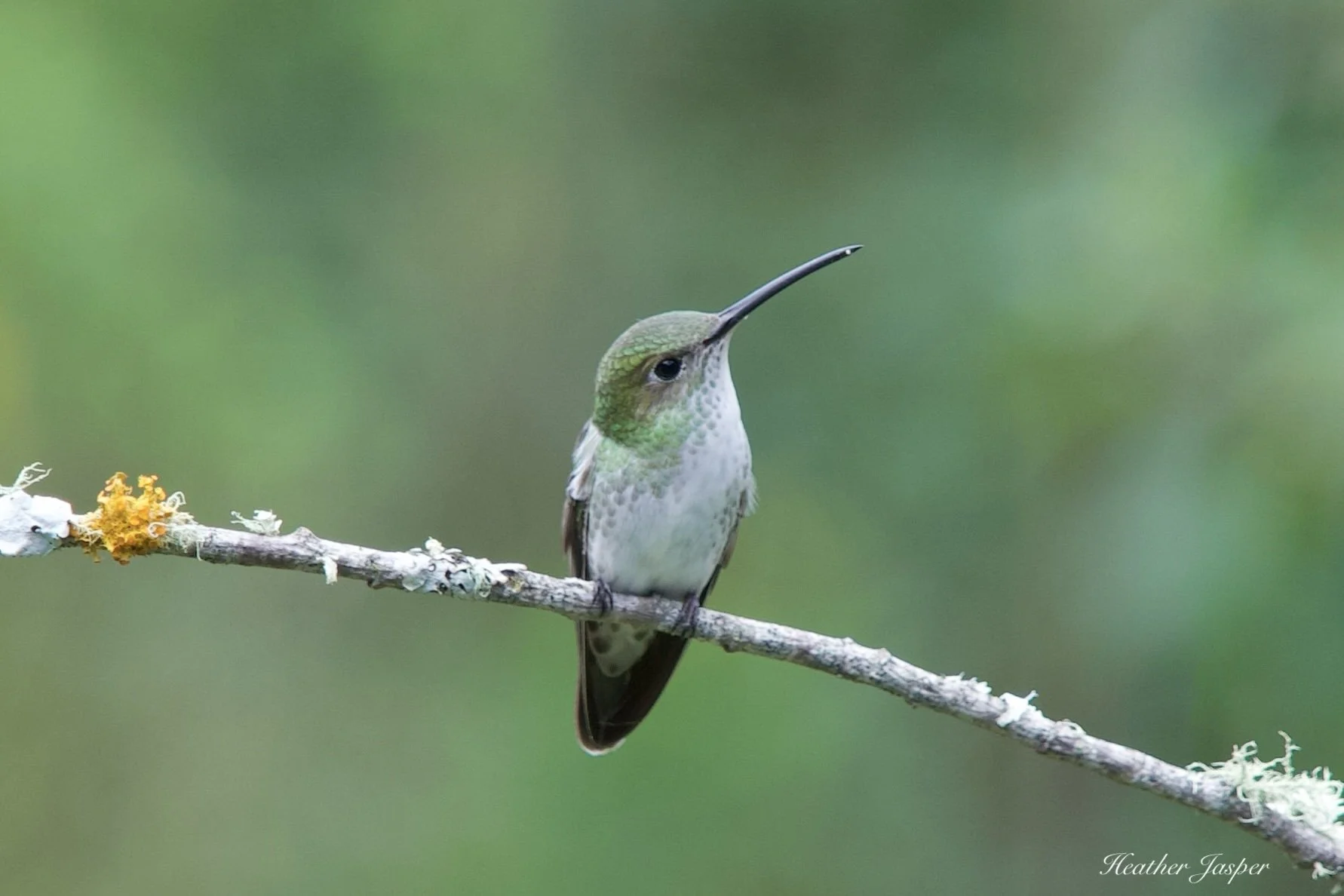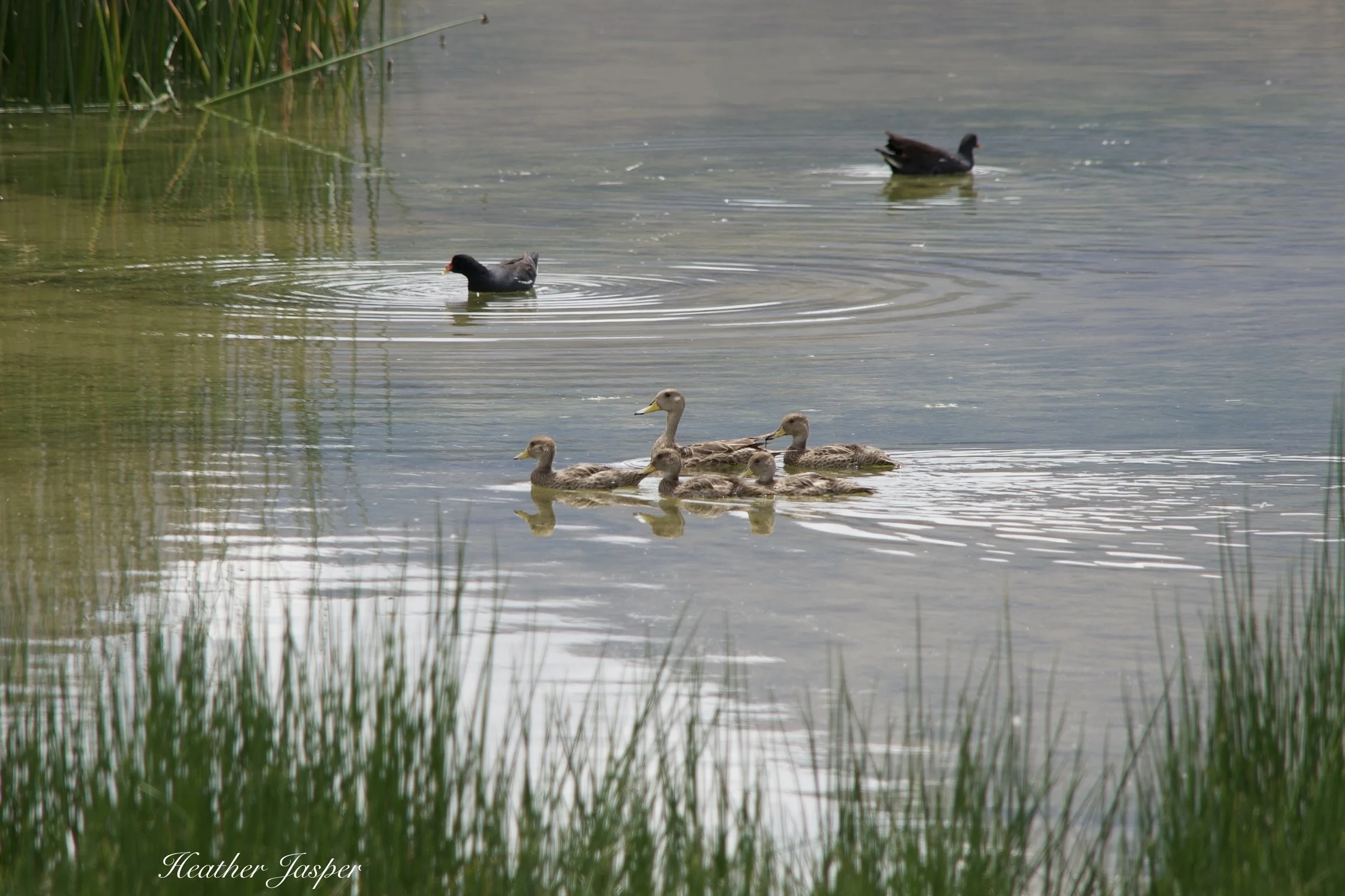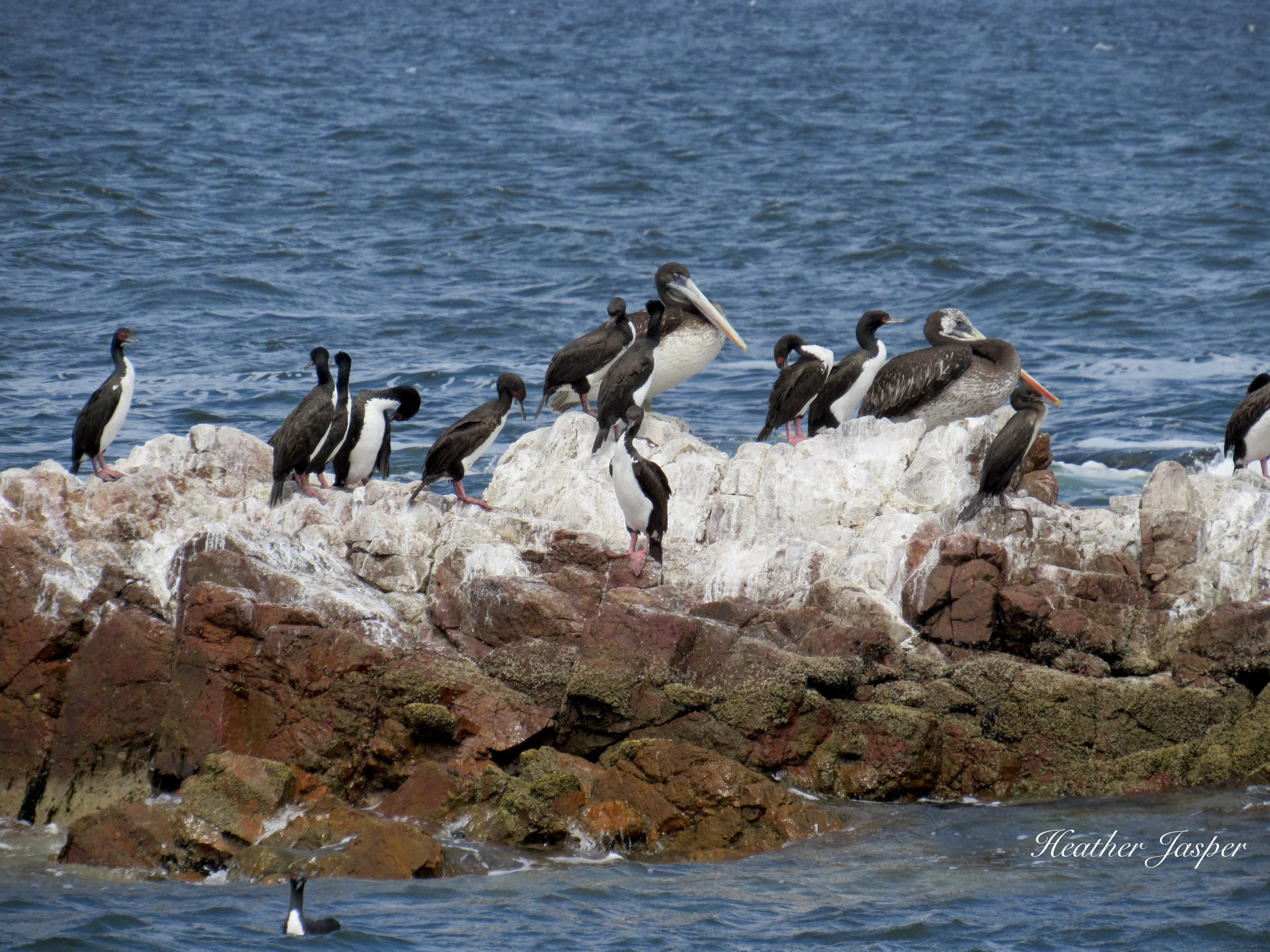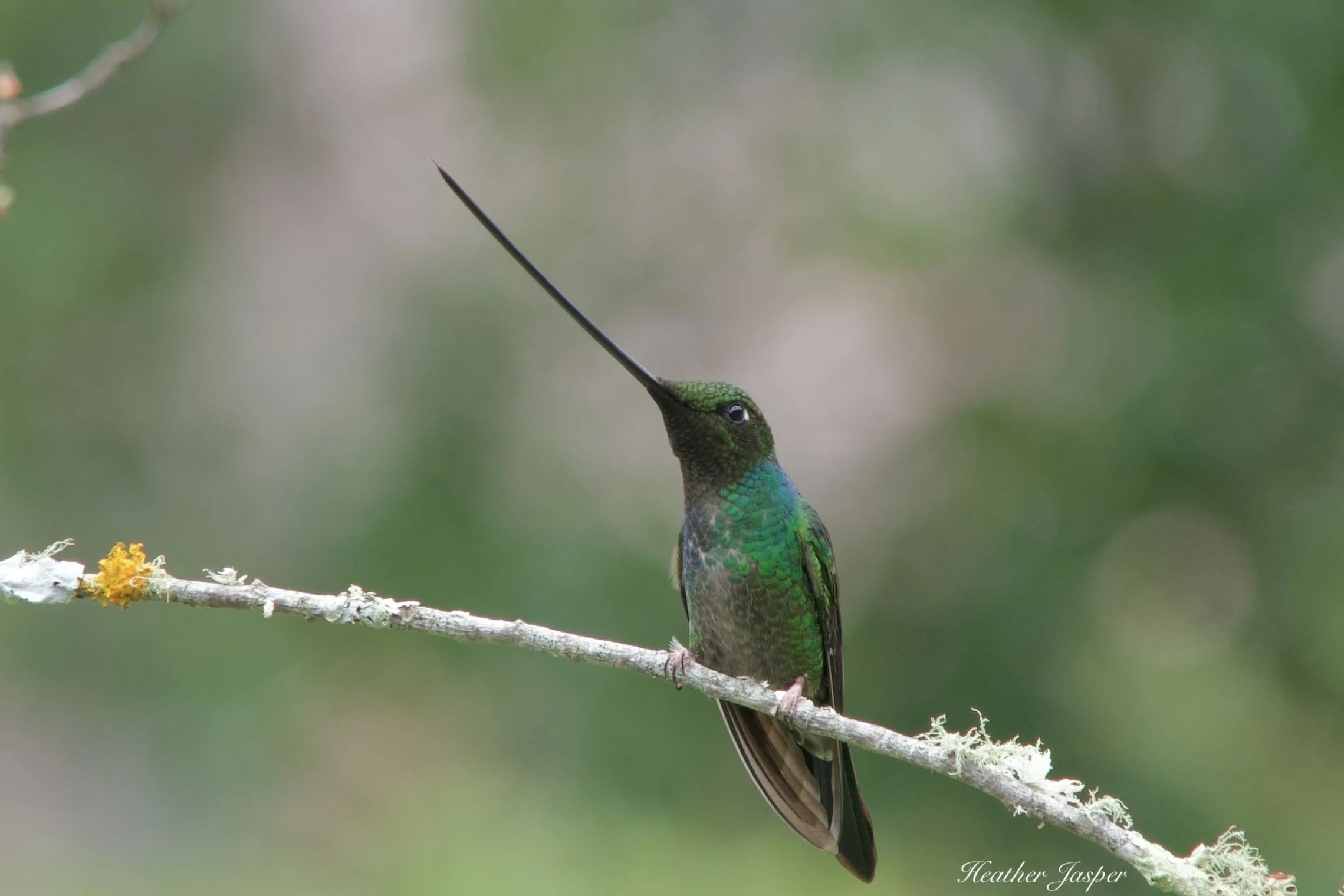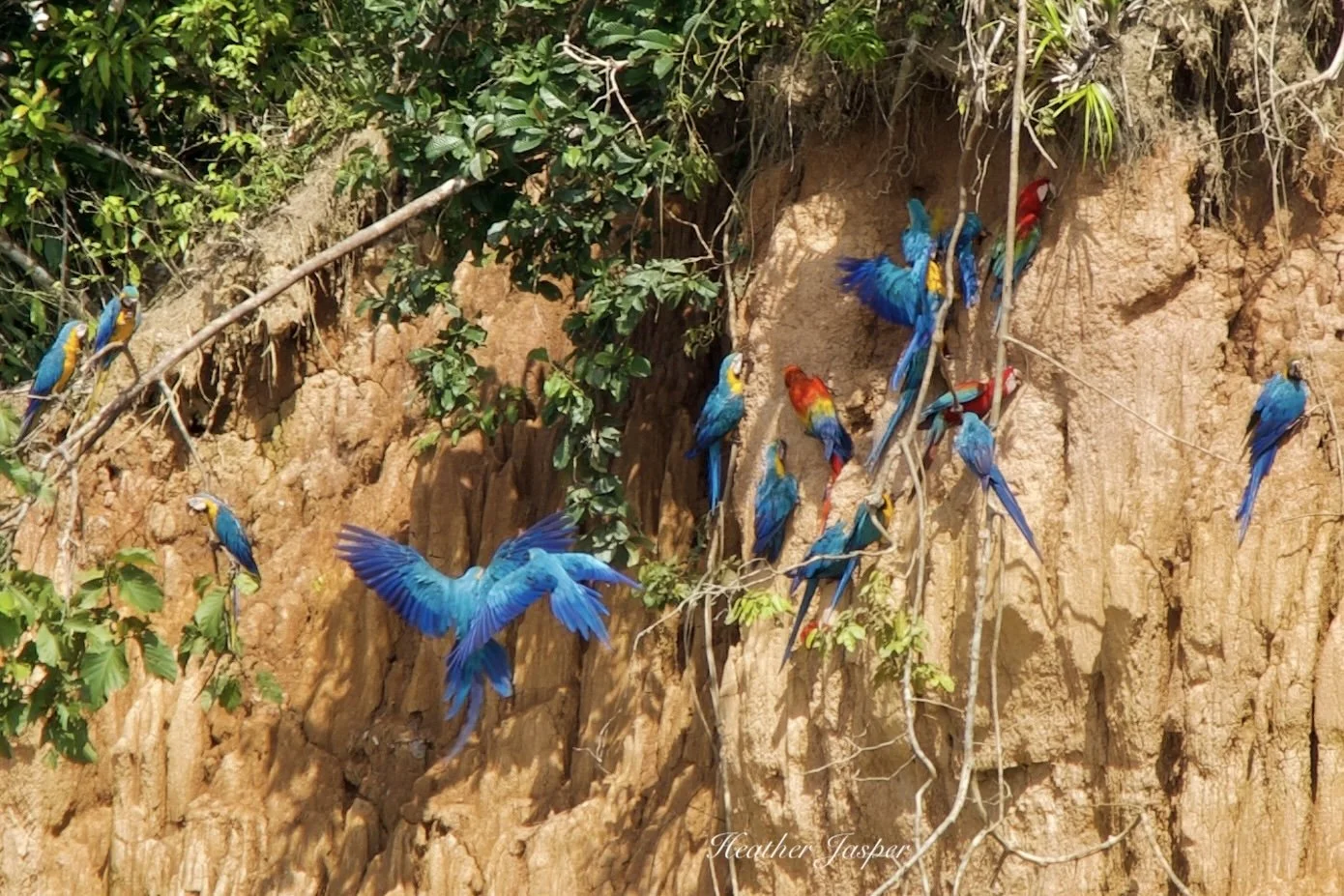Travel Tip 122
How to go birding in Peru
I saw this Black-tailed Trogon in the Tambopata National Reserve.
You may have noticed I’ve been birding a lot.
That’s partly because I’ve just had a lot of opportunities recently, and I don’t pass up an opportunity to go birding. It’s also because it’s spring here in Peru. Birds from the northern hemisphere are arriving, birds from the southern hemisphere are leaving and non-migratory birds are hatching chicks.
The Marvelous Spatuletail, at the Refugio del Colibrí Cola Espatula in Cocachimba, northern Peru.
First, why go birding in Peru?
So far, over 1,900 birds have been identified in Peru, but many remote areas have had few, if any, birders to officially identify species. As more birders come to Peru, and more Peruvians get into birding, more species will surely be identified. So far, 117 endemic species have been identified, and my favorites are the Marvelous Spatuletail and the Bearded Mountaineer hummingbirds.
Why does Peru have so many birds?
With coast, mountains and rainforest, and elevations from sea level up to 6,768m (22,205ft) the variety of bird habitats is astounding. There are 38 types of climate in Peru, but anybody who has driven the Manu road from the cloud forest down to the jungle can tell you that you can pass from one micro-climate to the next in just a few kilometers.
A Yellow-billed Pintail family and a couple Common Gallinules on October 24, 2025 at Huacarpay wetlands.
When to go birding in Peru?
Spring, from September to November, is a great time to see chicks of non-migratory species. Summer, from December to February, is great to see all the birds that come down from the northern hemisphere. Summer is also the rainy season, so it’s a great time to go to wetlands like Huacarpay. Fall, from March to May, is a great time to see the birds from farther south arrive and the ones from the north leave.
Most people come in winter, from June to August, because it’s the dry season and easier to visit the rainforest. Roads are more passable in the mountains and getting out and about is generally easier. Winter is also when we have the most species from farther south, so you can see equatorial and tropical birds that are here year-round plus birds from as far south as Patagonia.
Who to go birding with?
I’ve met some amazing bird guides in the past six years in Peru. Here are just a few of my top recommendations: Steve Sanchez of Kuntur Birding, Julio Tello and Erick Reategui of Ikam Expeditions, Juan José Salas Falcon.
Here’s my blogs on some of my favorite places to go birding in Peru!
This is not an exhaustive list. After six years I still feel like I’m just scratching the surface of where to see birds in Peru. If you know somewhere else I should go, drop it in comments below!
Guanay cormorants and Peruvian pelicans in the Paracas National Reserve.
Birding on the coast: Paracas National Reserve & Ballestas Islands
Black-bellied Tanager at Calzada, Moyobamba in Peru’s northern Amazonas department.
Birding in the northern mountains: Moyobamba Calzada, La Tingana, Kuélap, Marvelous Spatuletail Refuge, Gocta Falls, Fundo Achamaqui
Sword-billed hummingbird at the Ensifera Ensifera Gardens in the Sacred Valley near Cusco.
Southern mountains: Huacarpay Wetlands, Ensifera Gardens, Bearded Mountaineer Lodge, Wayqecha Biological Station
Scarlet Macaws and Blue-and-yellow Macaws at a clay lick in Tambopata National Reserve.

